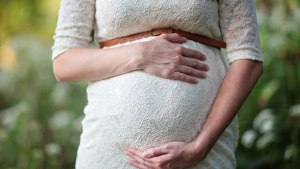The science of understanding a woman’s fertility is becoming more exact and more accessible by the day. As more couples leave behind hormonal contraceptives, better technology is being developed to fill the gap, providing people with reliable information about their bodies and their fertility. Here’s some of the new and upcoming technology that’s available to couples who want to track their fertility with confidence and accuracy.
For tracking your temperature
Tempdrop: Tracking your at-rest temperature can give you a lot of information about where you are in your cycle, but struggling with a thermometer first thing in the morning is harder than it sounds, especially if you’re nursing, or getting up with your kids, or working a night shift, or waking up at a different time every day — all of which make your temperature readings less accurate. The Tempdrop armband gets around those issues, and streamlines the process, by reading your temperature through the night, and sending the data to right to your phone.
The Ava wristband works in a similar way, but does more, tracking basal body temperature and other signals of fertility, including pulse rate and breathing, using an algorithm to pinpoint the beginning and end of the fertile window.
Other Bluetooth enabled thermometers, like the Kindara Wink thermometer, Femometer, and Daysy, send the information they gather straight to your phone, so you don’t have to get up and write anything down, and come with their own unique algorithms to interpret the data.
For testing progesterone
Proov is the first accurate at home test stick to read the progesterone levels in your urine. Progesterone is one of the most important hormones to track, since it can confirm that you’ve ovulated, and give you information about your luteal phase, and whether your body can support a pregnancy. Understanding when your fertile window begins and ends can either help you achieve conception sooner, or, if you’re avoiding a pregnancy, let you know when it’s safe to resume sexual intimacy.
Mira: This device measures the luteinizing hormone (LH), a hormone that precedes ovulation, in your urine — but instead of just detecting the presence of absence of a threshold level of that hormone, it gives you a quantitative reading. Everyone’s body is different, and everybody’s threshold of “normal” is different too, so Mira gives a more accurate reading that typical LH test sticks would, and detects your “peak” days of fertility with higher accuracy than even the Clearblue fertility monitor.
Coming soon
Although there’s no release date yet, Oova will measure both luteinizing hormone and progesterone. It then syncs its data with an app, which uses a sophisticated algorithm to interpret the results. You take a picture of the urine test stick result with the camera that comes with the app, and it is able to predict when you’ll reach peak fertility. Says Aparna (Amy) Divaraniya, PhD, CEO and co-founder of OOVA, “OOVA provides women with personalized information by learning her fertility profile. By capturing hormone trends through daily urine samples, we remove the subjectivity and need for invasive procedures required to diagnose fertility issues.”
Available for preorder, the Kegg fertility tracking device is designed to take the guesswork out of determining whether your cervical fluid is fertile or not. It’s shaped like (and doubles as) a kegel training device. Inserted into your vagina, the website explains, it “sends small pulses through your vaginal environment. Based on the response … kegg can determine when fertile cervical fluid is present.” It automatically sends that information to an app on your phone.

Read more:
CDC acknowledges Fertility Awareness-Based Methods to be more reliable than previously reported

Read more:
How NFP healed my infertility

